Above photo copyright Jonathan Gregson
Through the Looking Glass
A question that I’m often asked is why my father, John, decided to start the business, and how long Shipton Mill has been around for. For those of you who are more interested in the founding of the Mill or information on our milling methods, there is much more detail about this in A Handful of Flour, but I thought I would set out a little snapshot of the early beginnings on the blog.
Prior to taking on the Mill, my father and four of his friends worked doing up people’s houses in London. Their plan was to balance city life with a countryside base, and a slower pace of living. In reality, the Mill takes up all hours of the working day (and more) to keep the mill stones turning. They were inspired by the Arts and Crafts movement, influenced in particular by William Morris and John Ruskin. Craftsmanship over pure mechanisation was (and is) at the heart of Dad’s philosophy. He tracked down two local craftsmen, who spent days with him teaching him about caring for and preserving the mill stones. Their knowledge and assistance in setting up the Mill was critical to taking those first steps into what was previously an unknown craft to him.
A mill was recorded as being on this site in the Domesday Book, so the tradition of milling here dates back to at least 1086. We use French Burr stones to stone grind some of our flour – a method of milling which has changed very little over the centuries. This stone ground flour was the very first to be produced at Shipton Mill, and remains at the heart of what we do. We also use roller mills to produce some of our refined flours, enabling us to meet the varying requirements of our customers. When my father founded the mill back in 1979, he sourced all the equipment second-hand from mills which no longer had any use for it. Everything was pulled together on a tiny budget, but the quality of those second hand roller mills means they are still working well for us today (I think they are from the 1930s!). Going inside the Mill, you do get the feeling of stepping back in time.
My grandfather, Joe, captured some of the photos below. Below left, my father in the early days of Shipton Mill. Below right, my father and his friends hauling machinery into position
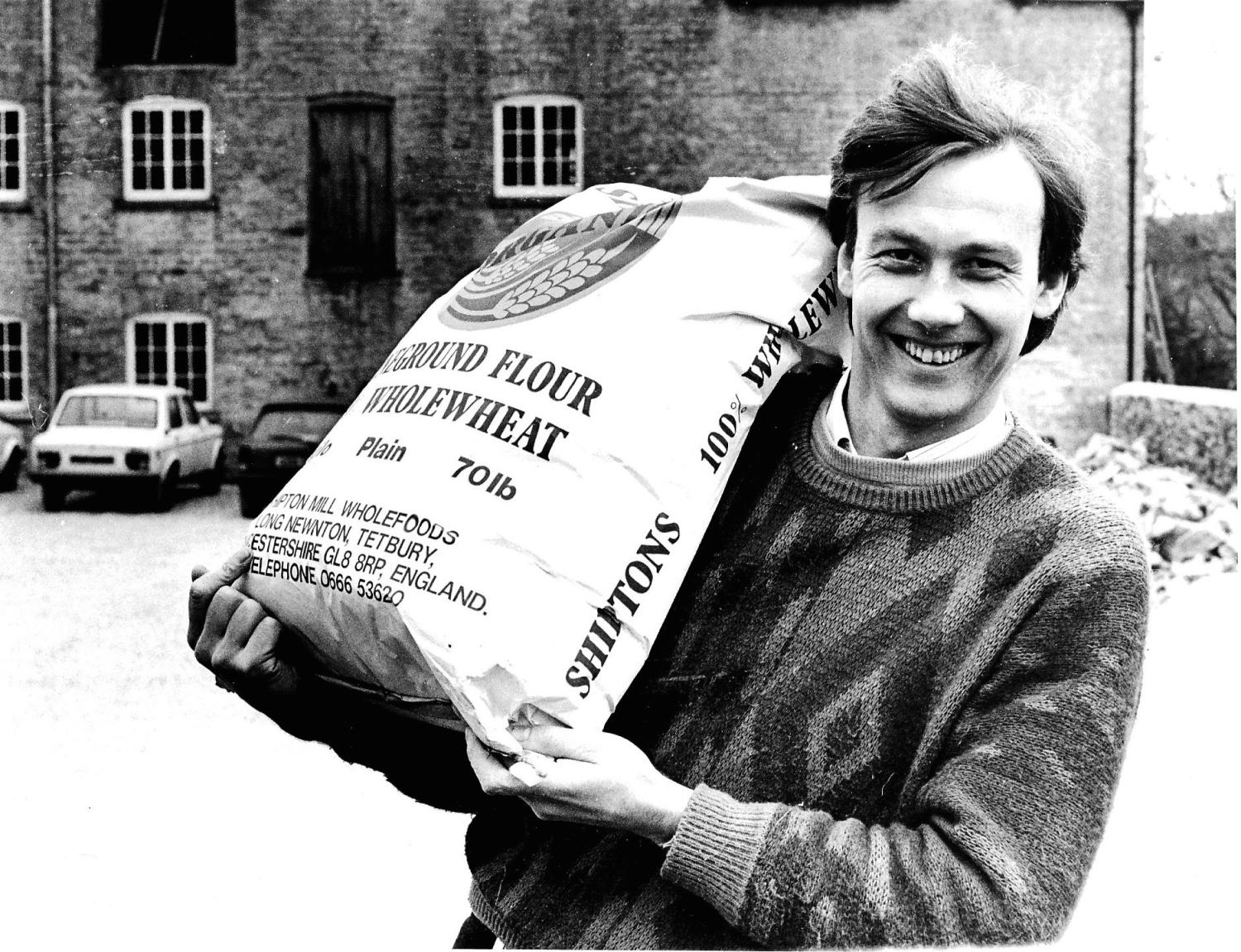
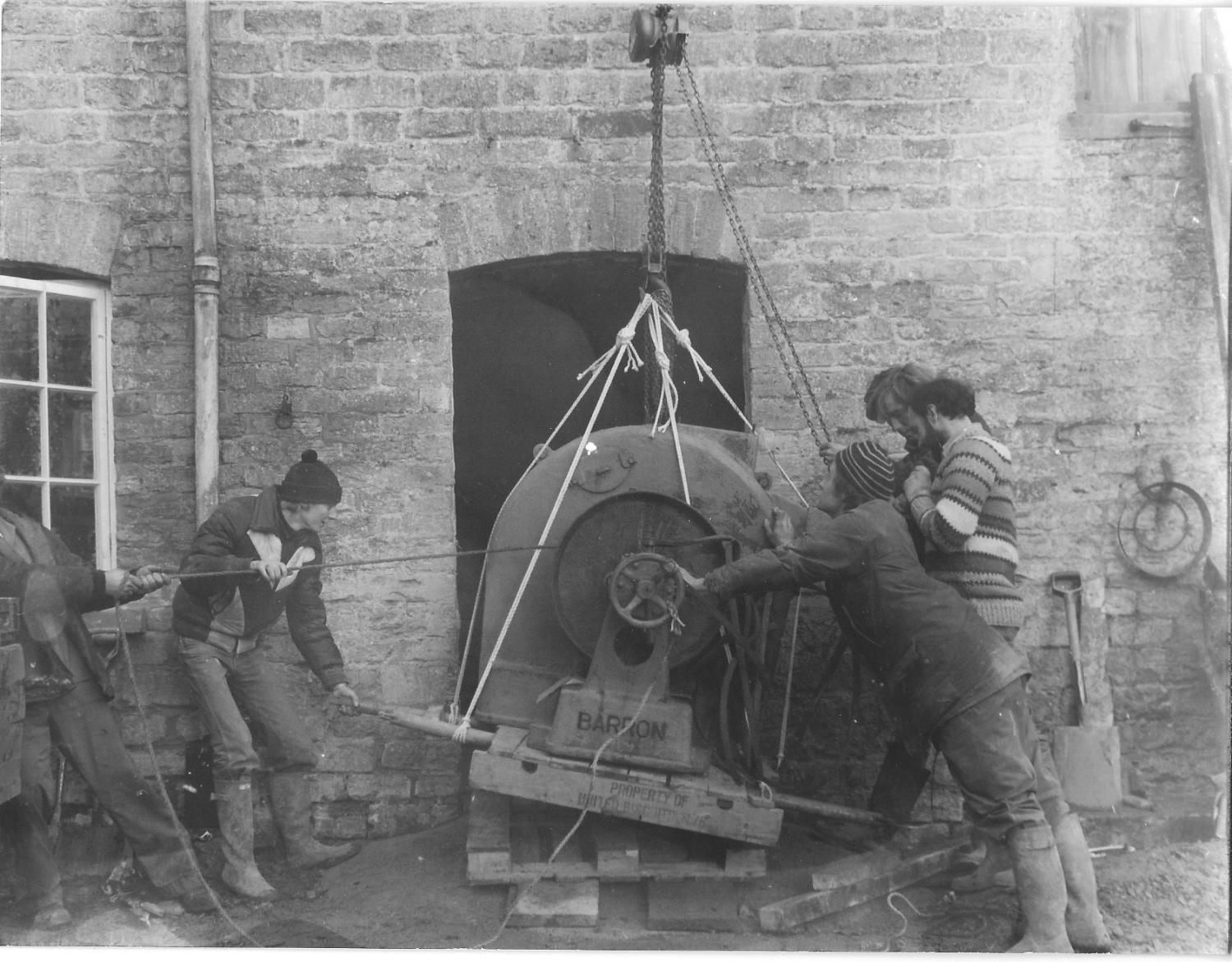

Above, the Mill during renovations, in the late 1970s.
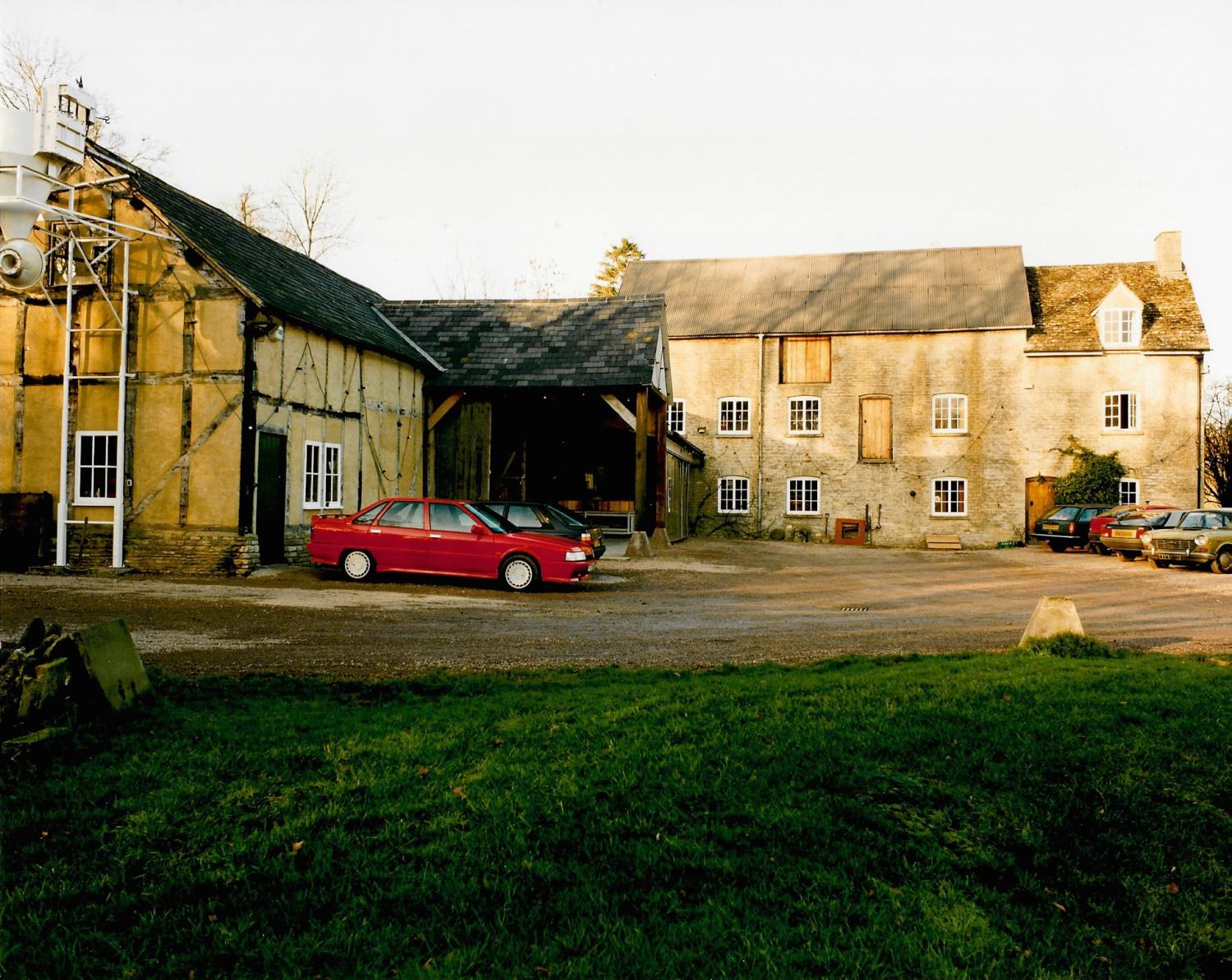
Above, the Mill post-renovation, in the 1980s.
Dad and his colleagues managed the renovations of the Mill themselves, rebuilding from the rubble, using original materials such as wooden beams from the shell of the old building wherever possible. The old water wheel was long gone, having been melted down for munitions during WWII. Dad had the wheel recast at a Bristol-based foundry, so it is now back in its rightful place in the wheel-house. The original intention was to power the Mill by water, but unfortunately the river does not provide enough consistent energy to reliably meet demand today. The water flow is particularly a problem during the summer months when water companies extract water from the river, and the levels drop so that there is insufficient energy.
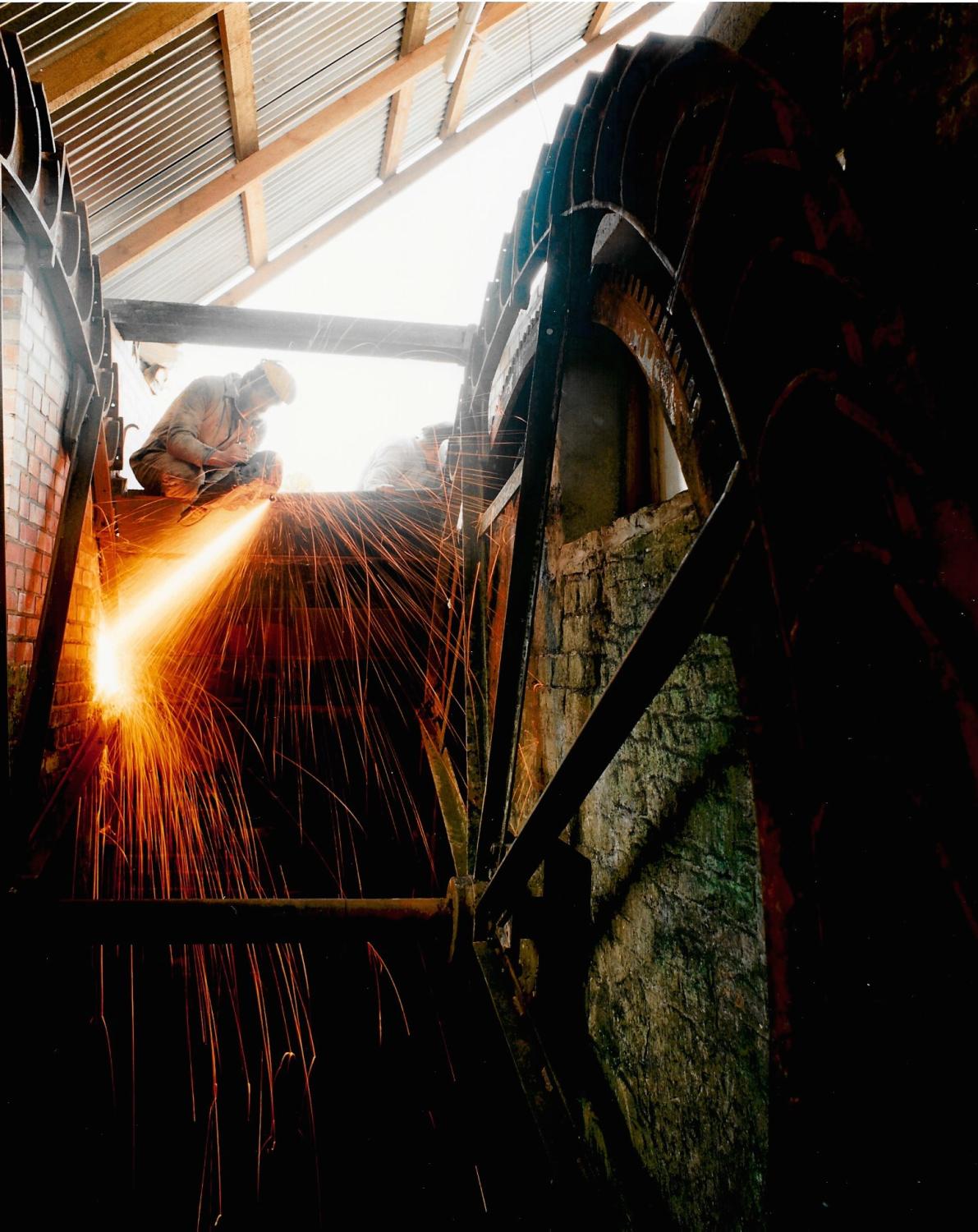
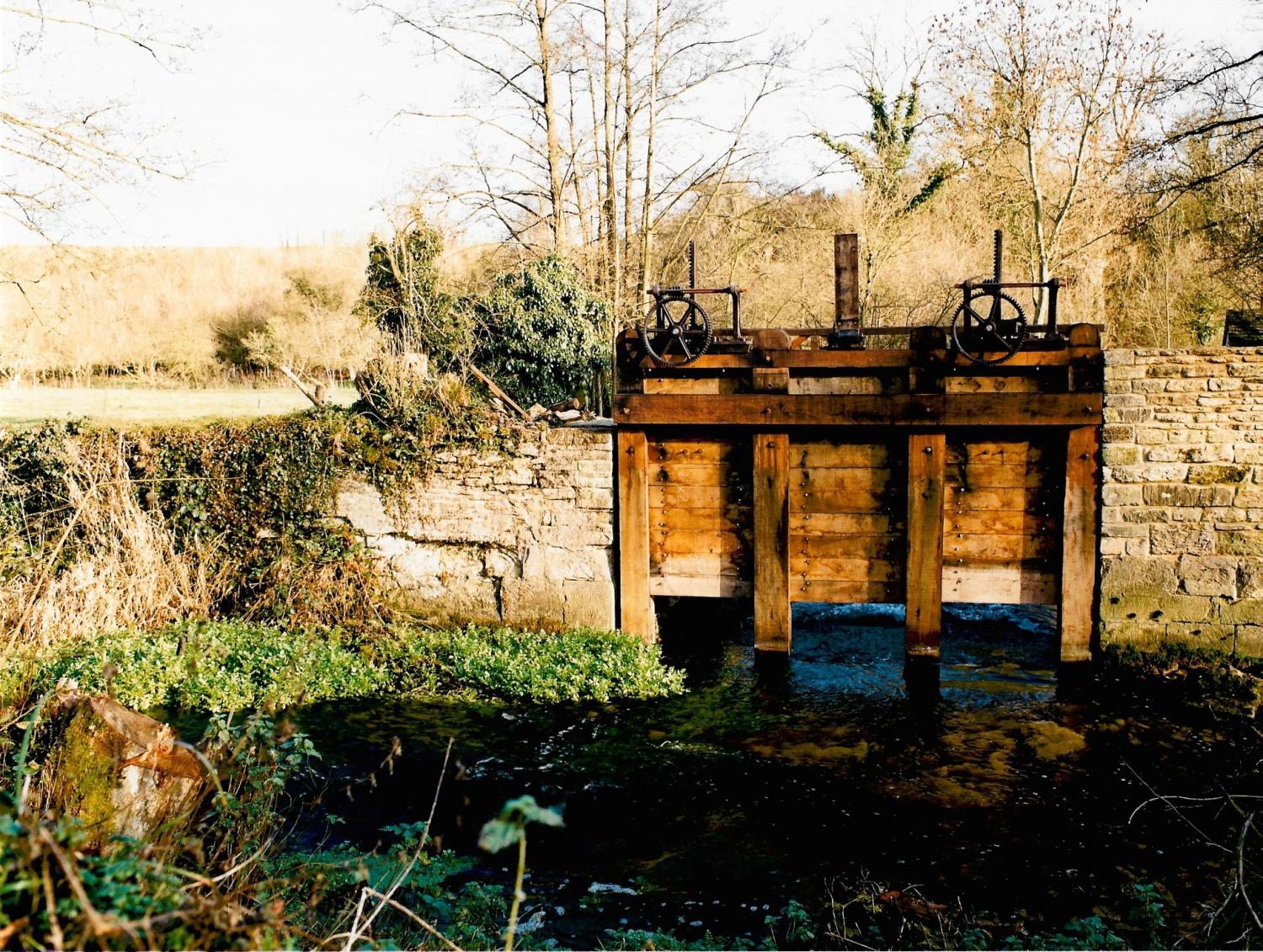
Above, the sluice gates, which control the degree to which the river flows past the water wheel, or on an alternate course if the level is too high.
A slower project that has been taking shape over the years is our Mill garden, which my mother, Siobhan, started designing back in the 1980s. This has been the source of inspiration for many of my recipes, along with the surrounding woodland and hedgerows from which we gather rose hips, elderflower, nettles, sweet cicely, blackberries and hazelnuts, amongst many other ingredients. More recently, our garden “team” has grown to include Debbie and Emily, who are learning how to apply biodynamic gardening principles to our produce.
We have an honesty box where our customers can collect fresh vegetables, and also posies of cut flowers from the beds. The vegetables and flowers are grown alongside each other, in the style of a typical cottage garden. The garden is very much “behind the scenes” of life at Shipton Mill, but for those of us who live or work here, it is an important part of the fabric. Meals at the Mill more often than not will revolve around food we have grown and harvested ourselves.
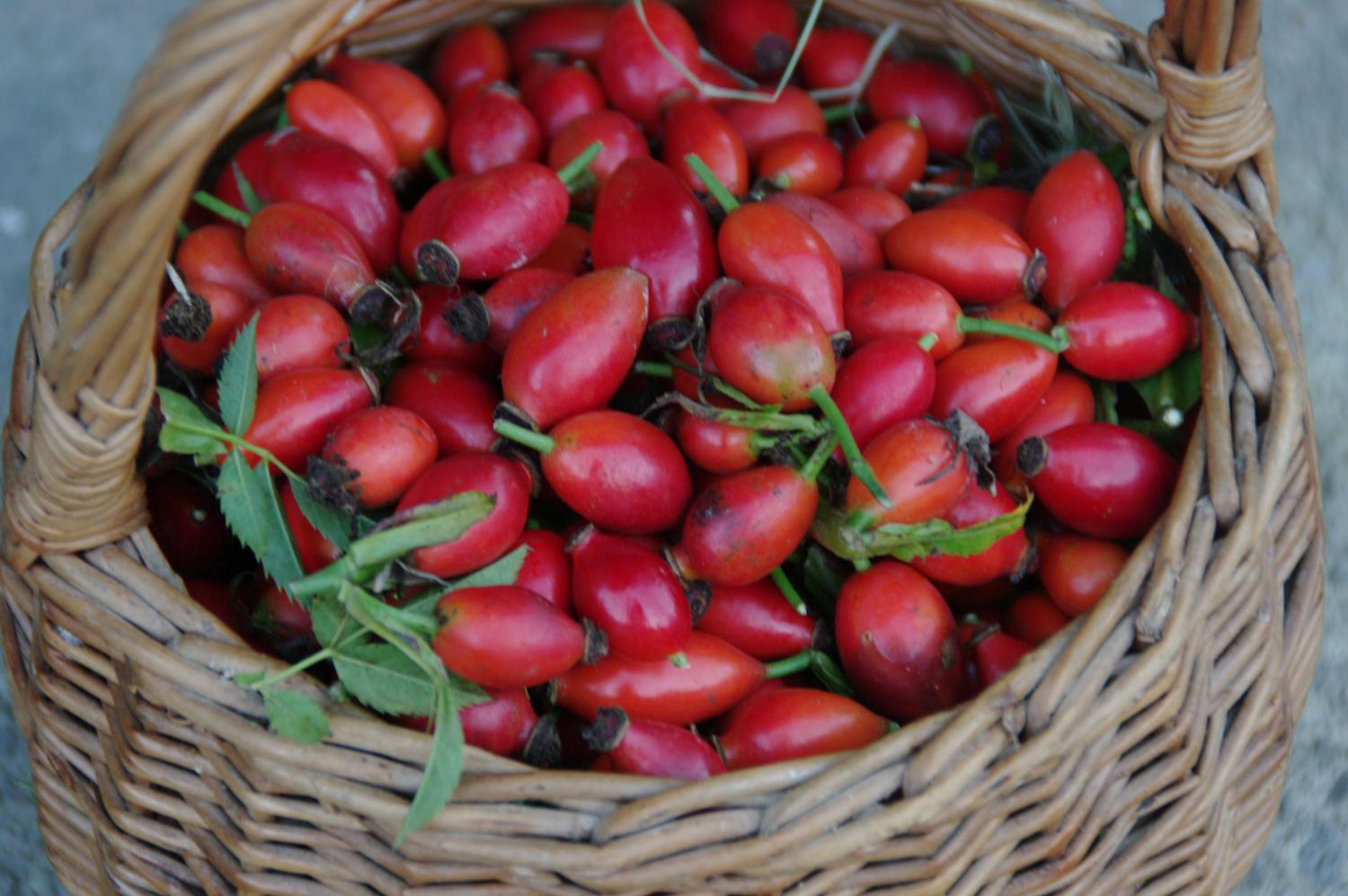
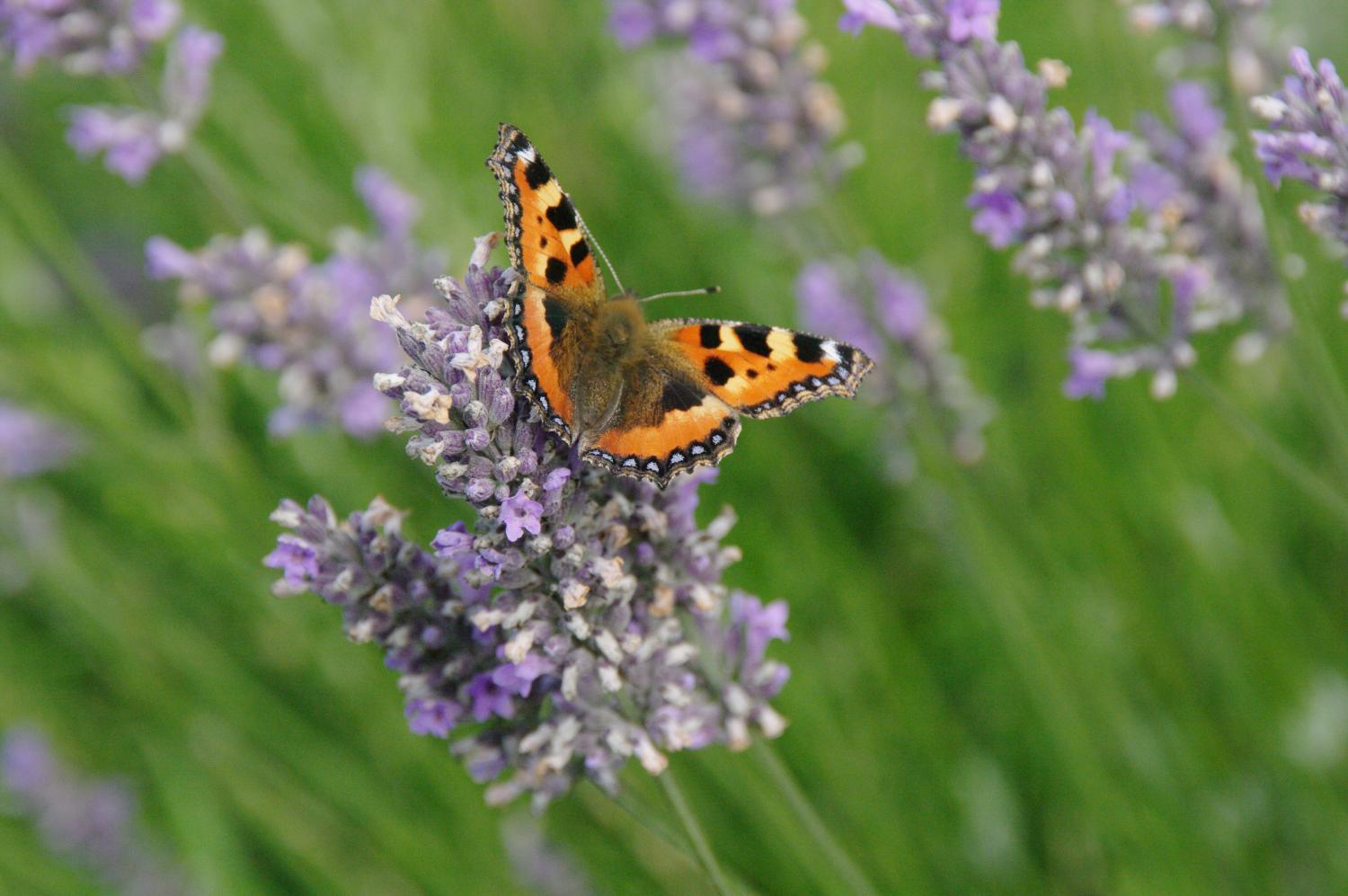
Above, lavender from the garden, and rose hips from the hedgerows. Below, dinner laid on a platform in the river, organised by Mum.
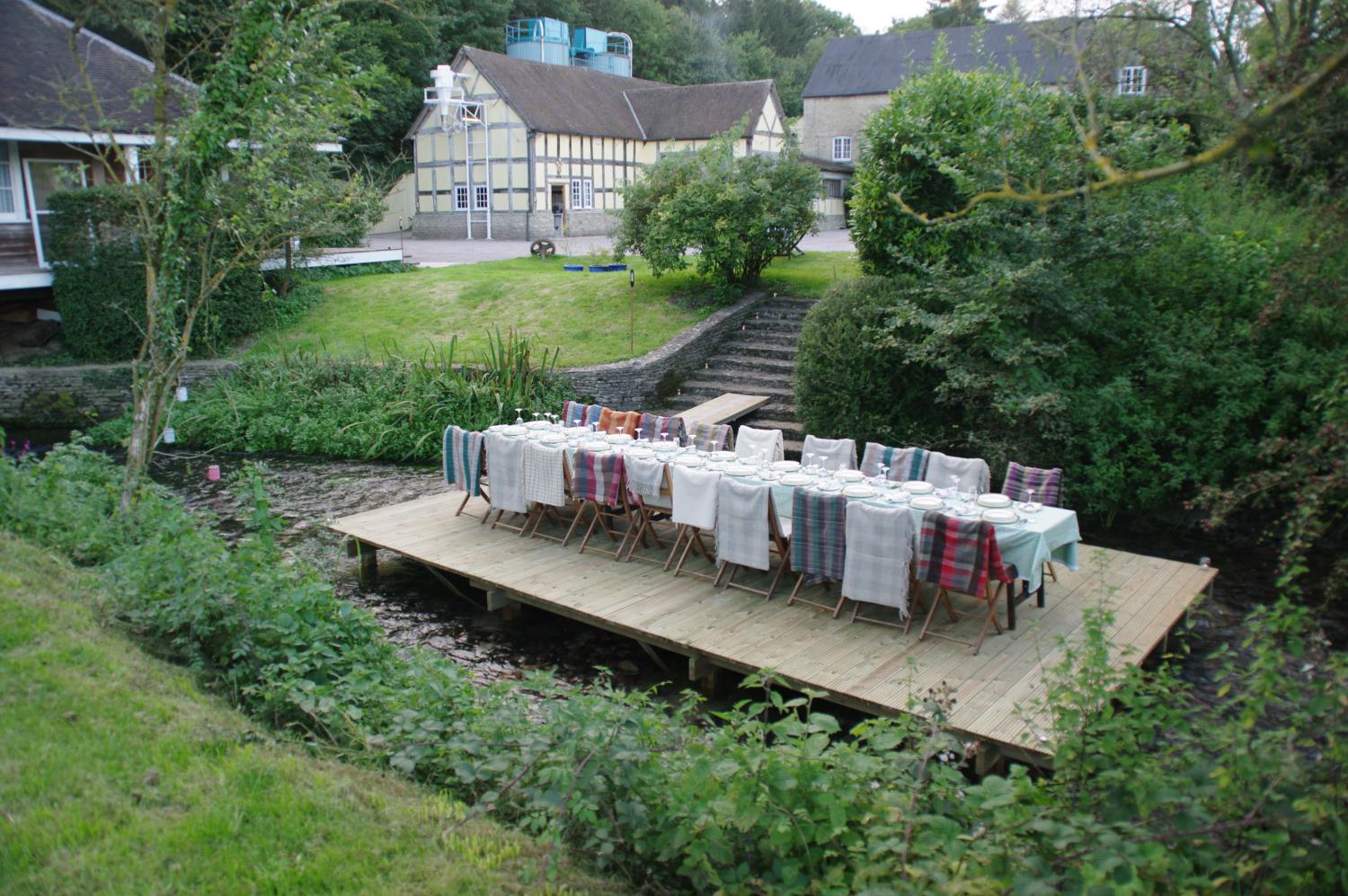
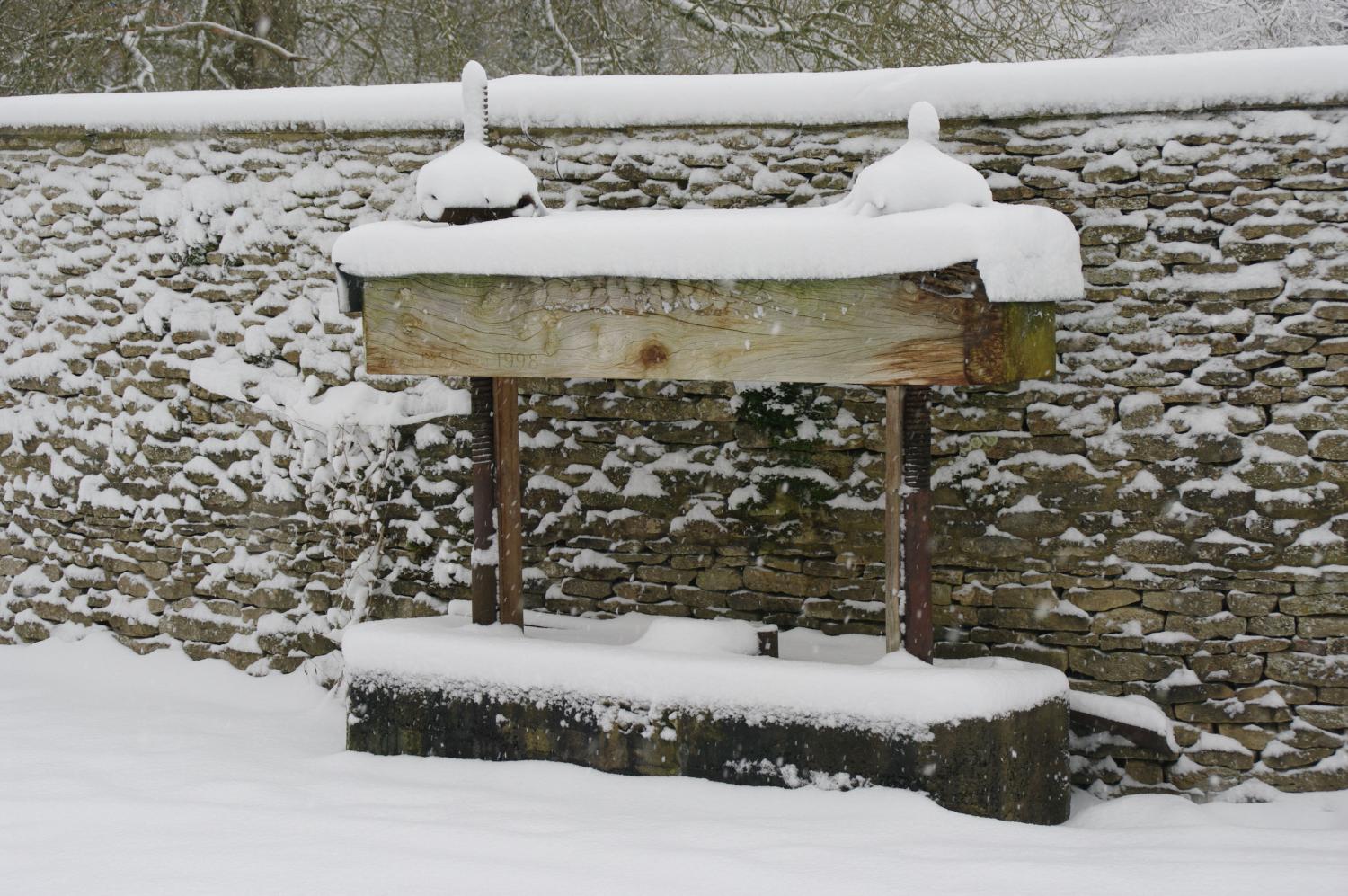
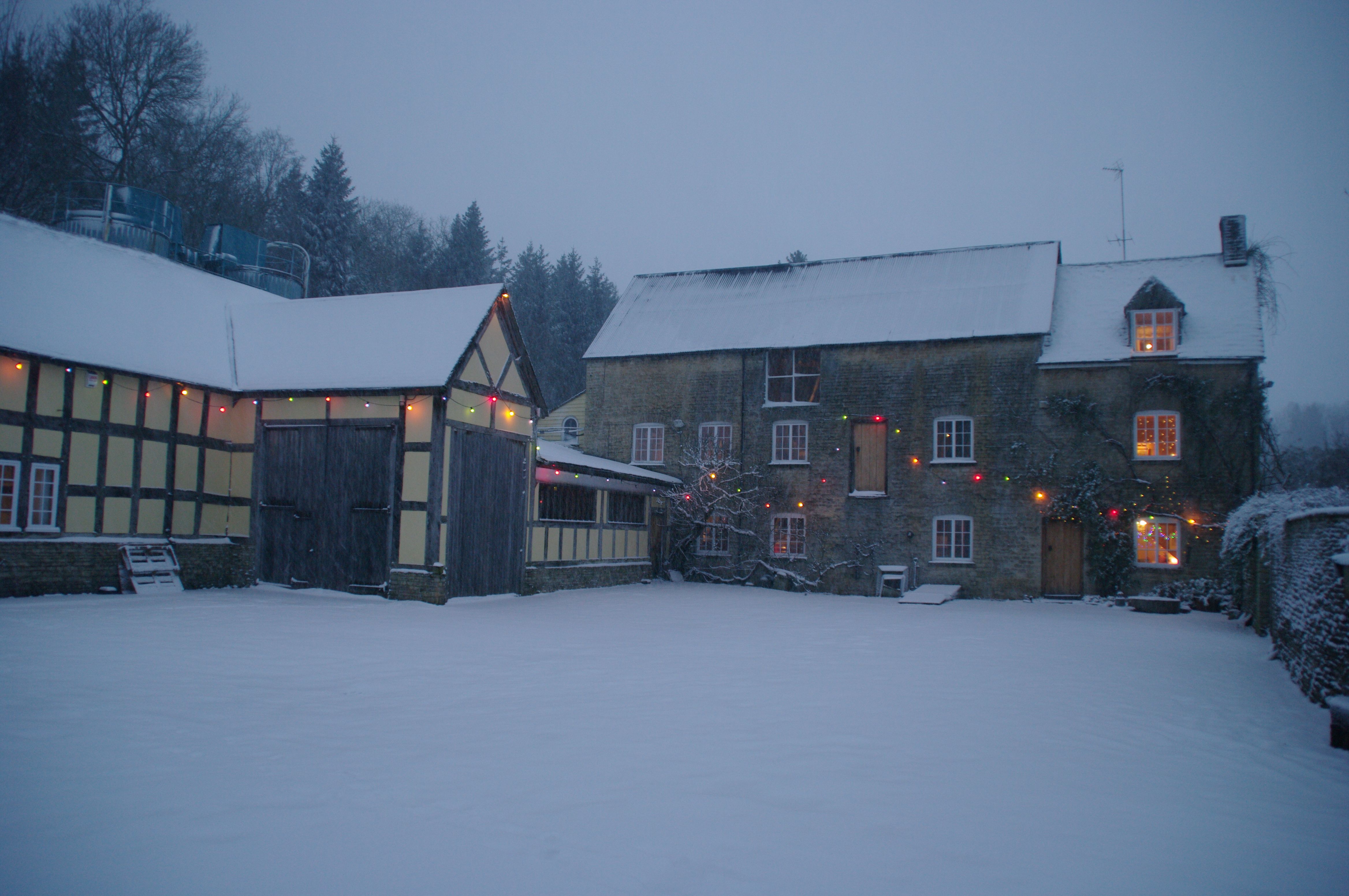
Above, the cider press and the Mill in the depths of winter
This post only brushes the surface of some of the history and work that has gone into creating the Mill, but I hope it will contribute to starting to build a picture of a place that I have always found to be rather wonderful… Through the blog I will be sharing lots of recipes, but also some of these snap-shots of events or life behind the scenes at Shipton Mill.
With thanks to Siobhan for supplying her wonderful photograph archive.
